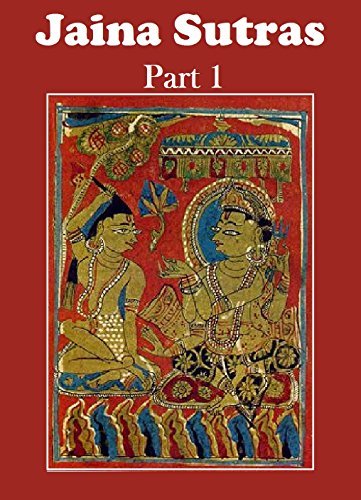Acaranga-sutra
by Hermann Jacobi | 1884 | 71,211 words | ISBN-10: 8120801237 | ISBN-13: 9788120801233
The English translation of the Acaranga Sutra, which represents the first the 12 Angas in Shevatambara Jainism. It is traditionally dated to the 5th-century BCE and consists of two parts containing lectures based on the teachings of Mahavira. Topics include: lifestyle of an ascetic: conduct, behavior, collecting alms, clothes, mode of walking and ...
Lecture 7, Lesson 4
A mendicant who is fitted out with three robes[1], and a bowl as fourth (article), will not think: I shall beg for a fourth robe. He should beg for (clothes) which he wants, and which are permitted by the religious code[2]; he should wear the clothes in the same state in which they are given him; he should neither wash nor dye them, nor should he wear washed or dyed clothes, nor (should he) hide (his garments when passing) through other villages, being careless of dress. This is the whole duty[3] of one who wears clothes. But know further, that, after winter is gone and the hot season has come, one should leave off the used-up (garment of the three), being clad with an upper and under garment, or with the undermost garment, or with one gown, or with no clothes--aspiring to freedom from bonds[4]. Penance suits him. Knowing what the Revered One has declared, one should thoroughly and in all respects conform to it. (1)
When it occurs to a blessed[5] mendicant that he suffers pain, and cannot bear the influence of cold, he should not try to obviate these trials, but stand fast in his own self which is endowed with all knowledge[6]. ‘For it is better for an ascetic that he should take poison.’ Even thus he will in due time put an end to existence. This (way to escape trials) has been adopted by many who were free from delusion; it is good, wholesome, proper, beatifying, meritorious. Thus I say. (2)
Footnotes and references:
[1]:
The three robes allowed to a Jaina monk are two linen under garments (kṣaumikakalpa) and one woollen upper garment (aurṇikakalpa). Besides these (kalpatraya), the monk possesses, 2. an alms-bowl (pātra) with six things belonging to it, 3. a broom (rajoharaṇa), 4. a veil for the mouth (mukhavastrikā). The alms-bowl and the articles belonging to it are specialised in the following gāthā: pattaṃ pattābaṃdho pāyaṭṭhavaṇaṃca pāyakesariyā | paḍalāi rayattāṇaṃca gocchao pāyanijjogo ||
[2]:
Things, &c.: this is the meaning of the technical term ahesaṇijja yathaiṣaṇīya, allowed objects of begging.
[3]:
Literally, outfit. Cf. II, 5, 2, § 1.
[4]:
I.e. freedom from worldly cares and interest.
[5]:
Vasumaṃ: rich (in control).
